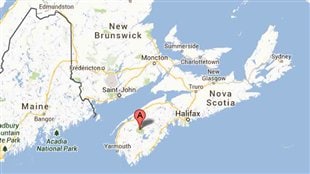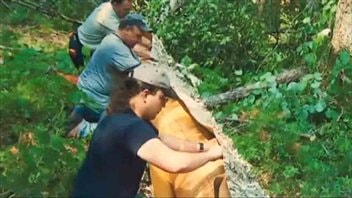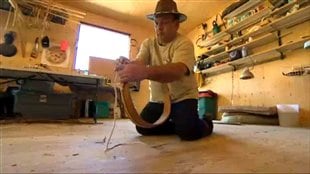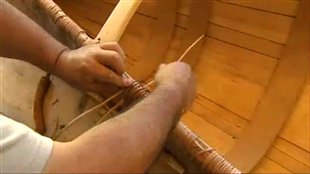One of the greatest inventions for travel and transport in Canada, and one of the earliest, was the birchbark canoe.

Requiring only the materials easily available in nature, they are light, easy to move through the water, or carry overland. Capable also of carrying sizeable loads, and easily repairable, the birchbarck canoe remains a magnificent invention. But there was a real skill needed to build them which required specialized techniques and knowledge . Much of that ancient skill is now lost, with only a handful of practitioners remaining across the country.
Todd Labrador, a Mi’kmaq living in the Kejimkujik region in central Nova Scotia, was descended from a long line of canoe builders. His great-grandfather was known as a master canoe builder. However, his own father died before the ancient knowledge could be properly passed on.

With a strong desire to connect to his family’s past, and to aboriginal heritage, he set about learning the skill by himself.
Using all the materials mother nature provides, he set about the task by gathering first the outer layer of bark from a birch tree, which is best done in hottest part of the summer.
Done correctly, the tree will continue to grow normally, although it can only provide one “barking” in its life.
With templates laid out, ie vertical poles in the ground to determine the shape and length of the vessel, the gunwales of white cedar are established and the bark and ribs inserted and all are literally sewn together with spruce roots. These are collected from moist grounds where the thin roots have grown straight, as opposed to rocky areas where they bend around obstructions. The thin straight roots are soaked in water to loosen their bark which is scraped off leaving a supple thin but strong material.


It is a labour intensive and time-consuming process that cannot be rushed.

Todd Labrador is convinced of the importance of maintaining this Canadian tradition.
Paddling his own first effort through the waterways of Kejimkujik National Park, he feels that his ancestors would be quite proud of him.







For reasons beyond our control, and for an undetermined period of time, our comment section is now closed. However, our social networks remain open to your contributions.